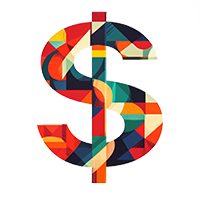Driving into and out of New York City involves various costs, primarily due to tolls and congestion pricing. Here’s a comprehensive breakdown to help you understand these expenses.
Table of Contents
- Overview of Toll Costs
- Congestion Pricing Details
- Additional Fees and Considerations
- Payment Methods and Discounts
- Frequently Asked Questions
Overview of Toll Costs
Several bridges and tunnels connect New York City to surrounding areas, each with its own toll rates. These rates vary based on the crossing, vehicle type, and payment method. As of August 6, 2023, the following are standard tolls for passenger vehicles:
- E-ZPass Rates: Using an E-ZPass typically offers discounted rates compared to paying by mail. For instance, the E-ZPass toll for a standard passenger vehicle on major crossings is lower than the Tolls by Mail rate.
- Tolls by Mail Rates: If you don’t have an E-ZPass, you’ll be billed via mail, often at higher rates. It’s advisable to check the specific toll rates for each bridge or tunnel you plan to use.
For a detailed breakdown of tolls by vehicle type and crossing, refer to the MTA’s official toll information.
Congestion Pricing Details
Implemented on January 5, 2025, New York City’s Congestion Pricing Program imposes additional tolls on vehicles entering Manhattan at or below 60th Street during peak hours. The primary goal is to reduce traffic congestion and fund public transportation improvements.
- Peak Hours:
- Weekdays: 5 AM to 9 PM
- Weekends: 9 AM to 9 PM
- Toll Rates:
- Passenger Vehicles: $9 during peak hours; $2.25 during overnight hours.
- Small Trucks and Buses: $14.40 during peak hours; $3.60 overnight.
- Large Trucks and Tour Buses: $21.60 during peak hours; $5.40 overnight.
These tolls are charged once per day per vehicle, except for taxis and for-hire vehicles, which incur a per-trip charge.
For a personalized estimate based on your vehicle type and travel time, use the MTA’s Congestion Relief Zone toll rate calculator.
Additional Fees and Considerations
- Taxis and For-Hire Vehicles: Trips in these vehicles are subject to a congestion surcharge. For instance, yellow taxis, boro taxis, and for-hire black cars incur a $0.75 per trip surcharge. Welcome to NYC.gov | City of New York
- Exemptions and Discounts: Certain vehicles, such as emergency vehicles and those transporting disabled passengers, may be exempt from congestion tolls. Low-income residents may qualify for discounts after a specified number of trips per month.
Payment Methods and Discounts
- E-ZPass: This electronic toll collection system offers discounted rates compared to Tolls by Mail. Ensure your E-ZPass account is active and funded to benefit from these savings. Source
- Tolls by Mail: If you don’t have an E-ZPass, a bill will be mailed to the vehicle’s registered owner. Note that Tolls by Mail rates can be up to 50% higher than E-ZPass rates. Source
Frequently Asked Questions
Q: Are there any toll-free bridges or tunnels into Manhattan?
A: No, all major crossings into Manhattan have associated tolls. Additionally, the Congestion Pricing Program imposes tolls for entering certain parts of Manhattan during peak hours.
Q: How can I avoid congestion pricing tolls?
A: Traveling during overnight hours (9 PM to 5 AM on weekdays and 9 PM to 9 AM on weekends) incurs reduced tolls. However, avoiding the Congestion Relief Zone during peak hours is the primary way to avoid these tolls.
Q: Do motorcycles pay the same tolls as cars?
A: No, motorcycles are typically charged lower tolls than passenger cars. For example, during peak hours, motorcycles are charged $4.50, with a reduced rate of $1.05 during overnight hours.
Understanding these costs and planning your travel accordingly can help manage expenses when driving in and out of New York City.
